It has been almost 2.5 years since I’ve started blogging about food aka food blogging. The main motto behind this blog was to share recipes in a easy way for those who had never stepped into the kitchen before, just like me. Initially I shared mostly Indian recipes, specifically Bengali traditional recipes. But I couldn’t continue it for long as I don’t eat Bengali food on my daily life. I can’t afford to spend longer time in the kitchen with my hectic schedule. And very frankly speaking these Bengali dishes taste always best when they come out from mom’s kitchen. So I spared myself from criticizing my own cooking on each and every possible dish and just went on with other international cuisines which I actually enjoy very much on my own. Recently, right after Durga Puja I received few requests from readers to publish more Bengali Traditional dishes and sweets. So I’ve decided to share two Bengali recipes for you now, one savory and one dessert. For savory I’ve picked Bengali Koraishutir Kochuri or Peas Kachori and I’ll reveal the dessert on my next post.
Koraishutir Kochuri or Peas Kachori is a typical breakfast item on winter days in any Bengali household. Here it is a proof that we Bengalis love anything which is fried in gallons of oil, no matter what time of the day it is and it is also the reason why we simply can’t live on greens! Personally I don’t prefer oily/fatty food on breakfast or early morning. So when it comes to kochuri or RadhaballabhiI push my breakfast time a little further so that my stomach can adjust the heaviness. In my home, back in Kolkata, my mother used to make this Matar Kachori on dinner as peeling peas and then cooking the filling out of it is a bit time consuming. Luckily now we are blessed (?) with the frozen foods where you can find peas any time of the year. So I saved myself from spending an miserable evening on peeling and separating peas from their pods and opted for the frozen peas from the frozen section of the super market.
Peas kachori or Mutter kachuri is known as Koraishutir Kochuri in Bengali. It is fried puffed bread, stuffed with slightly sweet peas stuffing. It is similar to stuffed puri but very unlike any north Indian ‘kachori’. The taste of the peas stuffing varies from spicy to sweet. But generally, peas, green chilies and ginger are used as core ingredients. And as for the shells or pooris, maida or all-purpose flour is used instead of atta or whole wheat flour.
Koraishutir Kochuri always tastes best with Dum Aloo. Traditionally it is served with Pure Veg Bengali Alu Dom and Cholar Daal but this time I used Kashmiri Dum Olav or Kashmiri Dum Aloowith Koraishutir Kochuri. And a sandesh (Mango Sandesh or Rose Sandesh or Chocolate Sandesh) with Rasogolla or Komolabhog is must to finish off the meal.
Here you go with the recipe of Bengali Koraishutir Kochuri or Peas Kachori which is more known as Mutter/Matar Kachori in other parts of India.
Preparation Time: 10 mins
Cooking/Active Time: 30 mins
Resting/Inactive time: 30 mins.
Total Time: 70 mins.
Yield: 22-25 pcs kochuri (3”-3.5” diameter)
Ingredients:
For stuffing:
Green peas: 1 cup (fresh or frozen)
Green chilies: 2-4 (depends on your taste bud)
Garlic: 4-6 cloves Or Ginger: 1 tsp grated (See Tips)
Asafetida (Hing) powder: 1 pinch or 1/8th tsp
Roasted cumin powder: 1 tsp
Red chili powder: 1 tsp (See Tips)
Oil or clarified butter (ghee): 2 tsp
Sugar: ½ tsp, optional (See Tips)
Salt: ½ tsp
For the Poori (outer shell/skin):
All-purpose flour: 2 cups
Warm water: 1/4th-1/3rd cup
Salt: ½ tsp
Oil or clarified butter (ghee): 1 tsp + 2 cups for deep frying
Preparation:
Watch the detailed video on how to make Koraishutir Kochuri or Matar Kachori.
Begin with preparing the stuffing.
The filling can be prepared ahead of time; even 1-2 days before. This stuffing tastes equally good in sandwich or stuffed paratha or even kulcha.
Wash and clean the peas in running water. If you are using frozen peas, soak them in water for 10 mins and drain. Wash garlic/ginger (whichever you are using) and green chilies too.
Now arrange peas, garlic/ginger and green chilies in wet grinder/blender and make a coarse paste of these by using as little water as possible. (See Tips)
Take a nonstick wok/pan and heat oil. Add pinch of asafetida and sugar, if using any. Let it sizzle.
Add the peas mixture and keep stirring continuously. (See Tips)
Once you notice mixture is coming together (meaning, leaving the sides of the pan without any trails), add dry roasted powder and salt as per your taste. Keep mixing the spices with the mixture on high heat.
Once it is done remove from flame and keep aside. Once it is a bit cool but still warm, take 1tsp of it and make a small ball. Do same for rest of the mixture or as much you require. Or if you are making the filling ahead of time, bring it to room temperature and then store in any air tight container and refrigerate. Stuffing will taste good upto 5-7 days, if stored properly.
It’s time to make the Poori (outer shell/skin).
I’ve already shared detailed step by step recipe of making poori in Radhaballabhirecipe with photo illustration (including Tips). So I’m sharing the steps only here for your reference. If you are making it for the first time or want to look at more detailed explanation, I’ll suggest you to view the previous post here.
Sieve the flour & salt together in a large bowl.
Make well in the center of the flour and pour oil/clarified butter (ghee) in to the well.
Mix all together with your palms in such a way that it looks like crumble.
Again make a well in the center. Pour warm water little by little to make soft dough.
Use a damp kitchen towel to cover the dough once you are done and leave it for 30 mins.
Assembling:
Make small balls from the dough. Keep them in a line. (See Tips)
Take one ball at a time in your palm. Press gently by other hand’s thumb. Now press the edge gently to make it bigger and flatter but without touching the center. (See Tips)
Now add a ball of filling to each flour pattie.
Take each ball at a time in hand and seal the edges by gently pressing and stretching the dough.
Make sure there is no crack at all around the dough. Try to give it a round flat pattie shape. Follow same procedure for rest of the balls.
Pour few drops of oil on the clean kitchen counter or rolling board (or wherever you or planning to roll the dough) and place one dough ball at a time.
Pour few drops of oil on the clean kitchen counter or rolling board (or wherever you or planning to roll the dough) and place one dough ball at a time.
Roll it with a rolling pin carefully. Stretch it as much as possible but don’t make cracks on the surface. If crack appears stop stretching. Otherwise all your hard work will go in vein. (See Tips)
It should be in size of ordinary poori but bit thicker.
Take a nonstick wok, fill 1/3rd of it with oil or clarified butter (ghee) and heat it on high flame. Once the oil turns hot turn the flame to simmer. (See Tips)
Add one kachori/kochuri slowly in the hot oil. Be careful not to spill the hot oil.
Remember it should be one kachori/kochuri at a time in the oil. Firstly, it will go down to the bottom of the wok and immediately will float on the top.
Increase the flame to medium-high at this point. Keep pressing the kachori/kochuri in the middle very gently with the ladle and at the same time keep rotating it.
Once you can spot the kachori/kochuri is changing its color to golden, immediately turn over the kachori/kochuri and keep doing the same way on the opposite side too.
Within few seconds this side will also change the color and it will turn to pale red. This is the time to remove your kachori/kochuri from oil and keep them on paper towel to get rid of excess oil. (See Tips)
Follow the same steps to make all the kachori/kochuri and serve them immediately.
kachori/kochuri should be served hot. It makes best pair with Bengali Cholar Dal and Bengali Veg Alur Dom and a sandesh.
But this time I wanted something different so I served Kashmiri Dum Olav or Kashmiri Dum Aloo with Koraishutir Kochuri aka Peas Kachori. And if you are having this on your Sunday breakfast, Bonde or Sweet Boondi is a must thing to lick off your plate.
Variations:
1. Instead of garlic, freshly grated ginger can be used, which is actually used in traditional Koraishutir Kochuri recipe.
2. Use 1-2 tsp of sugar while cooking the filling if you want a slight touch of sweetness in Kochuri.
3. Use roasted chili powder with roasted cumin powder (Bhaja Moshla or Dry Roasted Spices) instead of regular chili power to enhance the flavor.
4. Use ½ tsp of fennel seed with asafetida to tamper the oil for a different flavor.
Tips:
1. I personally prefer the aroma of garlic over ginger so I always pick garlic over ginger. But traditionally garlic is never used in Bengali Koraishutir Kochuri. Instead grated ginger is used for the fragrance. Now, it is completely your personal preference what you want to use.
2. Red chili powder is an optional ingredient too. If you can’t handle the hot quotient it’s better to avoid.
3. If your peas are not sweet, not even slight hint of sweetness in it use sugar while cooking the filling.
4. Remember, while you are making paste of peas, more water you will add to it, more time it will take to evaporate during cooking. As this mixture is very sticky, I add only 1-2 tsp of water to make the paste and while pouring the paste in a bowl I use another 3-4 tsp of water to get rid of the stickiness.
5. Be very cautious; this peas mixture is too sticky to handle. Once it sticks, it is harder to mix and cook the mixture. But if it gets stuck, don’t worry, keep your cool. Be patient and keep stirring as much as possible. Don’t leave it that way, it will burn otherwise. Once you will see mixture is coming together, then only try to scrap off the mixture from the bottom with a spatula or ladle. It will come off.
6. It is definitely not necessary to maintain the dough balls in a line but it will help you to complete the job neatly and without any trouble.
7. Once you will fill the center, it needs to be bit heavy to hold the filing. Otherwise it will tear the skin or the dough and will cause a mess.
8. If there are any cracks at all on the surface of the kochuri/kachori, the filling will split in the oil when you are going to fry.
9. To check the temperature of the oil: add a tiny particle of the dough in the hot oil, if it sizzles immediately it is the right temperature.
10. It is important that you take out the kochuri/kachori from oil at correct time, otherwise kochuri/kachori will get browned and crisp; not soft, how it should be.
Eat, Love & Enjoy! Repeat!!!















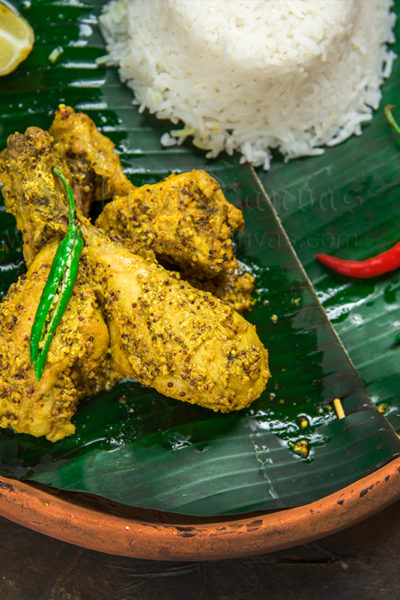
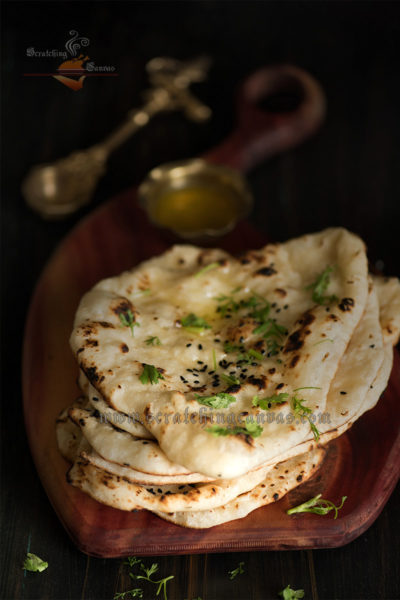
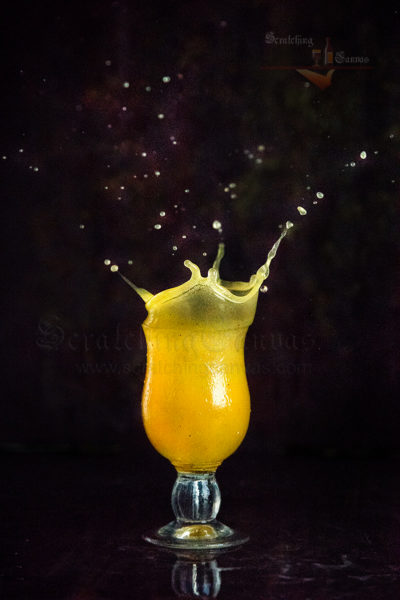
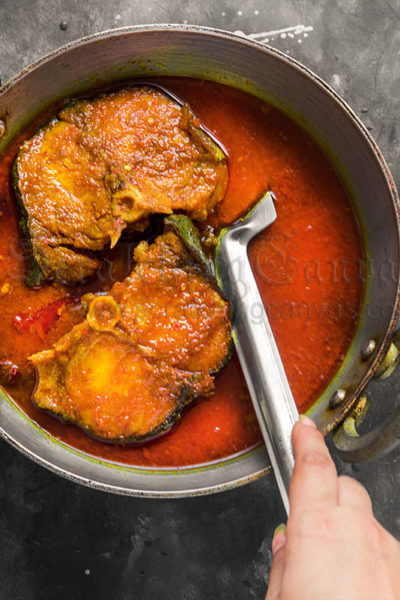
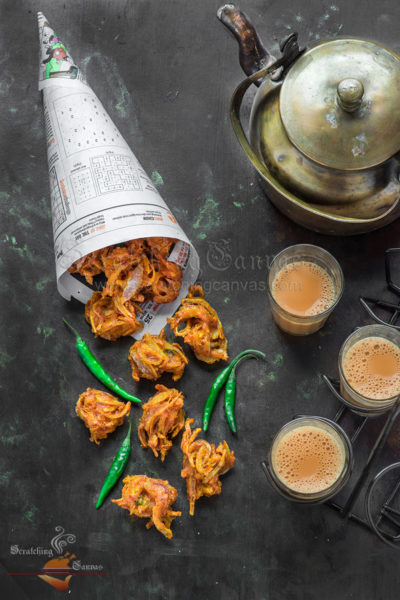
well explained post..Bookmarking dear
Beautiful and mouthwatering post.. kochuris look just perfect dear Rimli